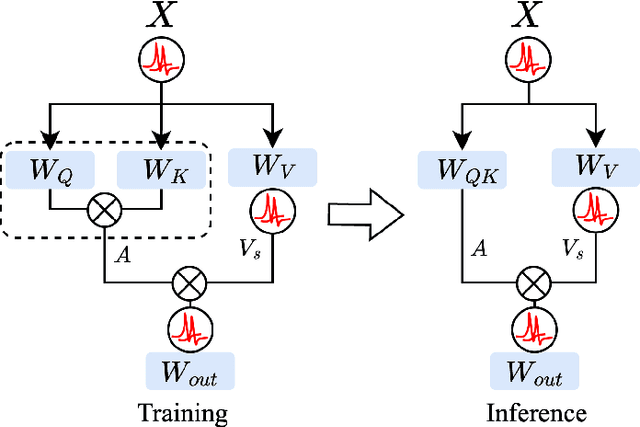IML-Spikeformer: Input-aware Multi-Level Spiking Transformer for Speech Processing
Paper and Code
Jul 10, 2025



Spiking Neural Networks (SNNs), inspired by biological neural mechanisms, represent a promising neuromorphic computing paradigm that offers energy-efficient alternatives to traditional Artificial Neural Networks (ANNs). Despite proven effectiveness, SNN architectures have struggled to achieve competitive performance on large-scale speech processing task. Two key challenges hinder progress: (1) the high computational overhead during training caused by multi-timestep spike firing, and (2) the absence of large-scale SNN architectures tailored to speech processing tasks. To overcome the issues, we introduce Input-aware Multi-Level Spikeformer, i.e. IML-Spikeformer, a spiking Transformer architecture specifically designed for large-scale speech processing. Central to our design is the Input-aware Multi-Level Spike (IMLS) mechanism, which simulate multi-timestep spike firing within a single timestep using an adaptive, input-aware thresholding scheme. IML-Spikeformer further integrates a Reparameterized Spiking Self-Attention (RepSSA) module with a Hierarchical Decay Mask (HDM), forming the HD-RepSSA module. This module enhances the precision of attention maps and enables modeling of multi-scale temporal dependencies in speech signals. Experiments demonstrate that IML-Spikeformer achieves word error rates of 6.0\% on AiShell-1 and 3.4\% on Librispeech-960, comparable to conventional ANN transformers while reducing theoretical inference energy consumption by 4.64$\times$ and 4.32$\times$ respectively. IML-Spikeformer marks an advance of scalable SNN architectures for large-scale speech processing in both task performance and energy efficiency.
 Add to Chrome
Add to Chrome Add to Firefox
Add to Firefox Add to Edge
Add to Edge